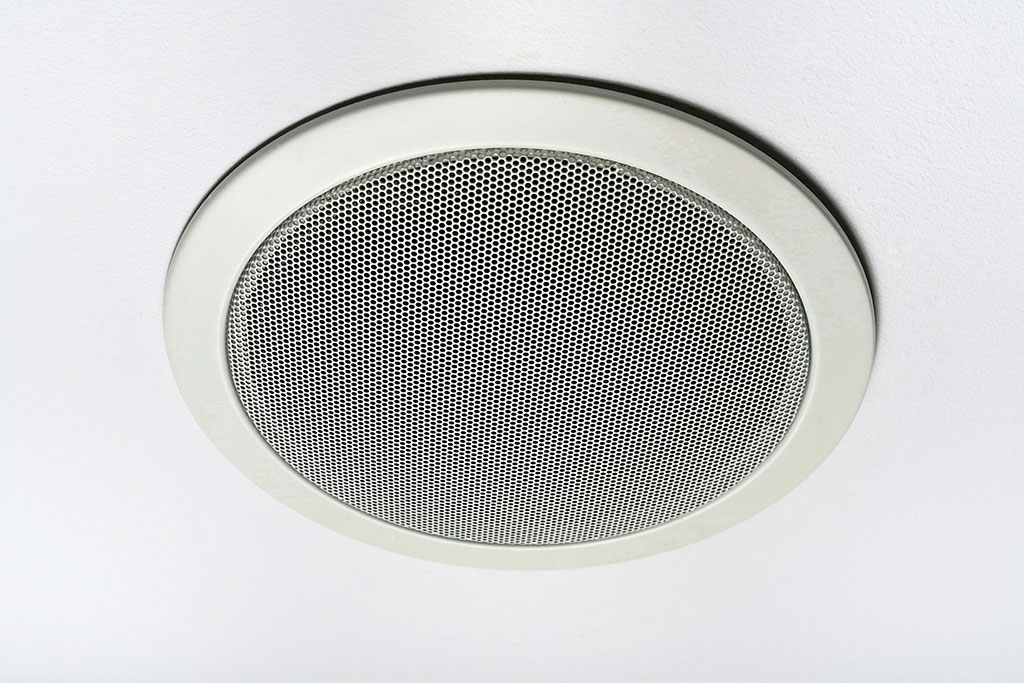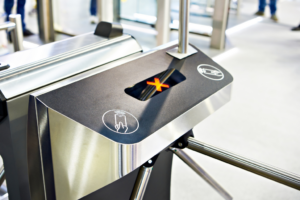Understanding the Need for an Amp with Your In-Ceiling Speakers

The beauty of in-ceiling speakers lies in their ability to deliver high-quality sound without taking up valuable space in your room. Ideal for both commercial and residential applications, these speakers seamlessly integrate with your room’s decor while providing immersive sound for music or home theater systems. But one question that often arises when setting up in-ceiling speakers is, “Do you need an amp for your in-ceiling speakers?” The answer is usually yes. This article will discuss the reasons why an amplifier is necessary and provide some tips for choosing the right one.
What Is the Purpose of an Amplifier?
An amplifier, or “amp,” is a device that magnifies an audio signal, making it powerful enough to drive speakers and deliver sound that’s loud enough to be heard. The amplifier is an essential component of any speaker system, including in-ceiling speakers. It’s the powerhouse that drives the speakers, enabling them to deliver clear and high-quality sound.
Why Do You Need an Amplifier for Your In-Ceiling Speakers?
In-ceiling speakers, like any other speakers, require power to function. While these speakers can connect directly to your audio source, such as a stereo or home theater system, the audio signal from these sources may not be strong enough to deliver the volume and sound quality you desire. This is where an amplifier comes in.
An amplifier boosts the audio signal, providing the power necessary to drive the speakers and produce sound that can fill a room. Without an amplifier, your in-ceiling speakers may not function to their full potential, and the audio output may be weak or distorted.
How to Choose the Right Amplifier for Your In-Ceiling Speakers?
Not all amplifiers are created equal. The right amplifier for your in-ceiling speakers will depend on several factors:
- Power Requirements: The power needs of your speakers will dictate the power output you should look for in an amplifier. This is typically measured in watts. As a general rule, your amplifier should be able to deliver power equal to twice the speaker’s RMS power rating. This ensures that the amp can handle peaks in volume without causing distortion or damage.
- Number of Channels: The number of channels on your amplifier should match the number of speakers you plan to install. For instance, if you’re planning a stereo setup with two in-ceiling speakers, a two-channel amp will suffice. But, if you’re setting up a surround sound system, you’ll need an amplifier with more channels.
- Impedance Compatibility: Impedance is a measure of resistance in an electric circuit. It’s important to match the impedance of your amplifier with your speakers. Most speakers have an impedance of 8 ohms, but some may have 4 or 6 ohms. Make sure your amp can handle the impedance of your speakers.
- Input and Output Connections: Ensure the amplifier has the necessary inputs to connect with your audio source and outputs to connect with your speakers.
In the world of in-ceiling speakers, an amplifier isn’t just an accessory—it’s a necessity. Understanding the role an amplifier plays in your audio setup is crucial to achieve the best sound quality possible.
LinkedSecurity offers a wide range of high-quality audio equipment, including amplifiers suitable for in-ceiling speakers. Our experts can help guide you through the process of selecting the right amp for your specific needs and ensure that you receive optimal performance from your speaker setup.
Considerations for Amp Installation
Even after choosing the right amp for your in-ceiling speakers, proper installation is a must to extract its maximum benefits. An amplifier should be located in a well-ventilated area to prevent overheating, which could affect its performance or even cause damage. It should also be placed in a spot that’s easily accessible for any adjustments or maintenance.
Moreover, wiring plays a significant role in the performance of your in-ceiling speakers and amp. You need to use high-quality cables to prevent any signal loss or interference. Also, make sure the wire’s thickness, or gauge, is suitable for the length of the run and the power requirements of your speakers.
The Role of a Receiver
A receiver might be another component you want to consider when setting up your in-ceiling speakers. A receiver is essentially an amplifier integrated with a radio tuner and a preamp. The preamp allows you to switch between different audio and video sources, control volume, and often includes tone controls. If you’re setting up a home theater system, a receiver would be an ideal choice as it simplifies the setup process and reduces the number of separate components needed.
Conclusion
In conclusion, an amplifier is a necessary component for your in-ceiling speakers to ensure they deliver high-quality sound. Choosing the right amplifier and installing it correctly is crucial to optimize the performance of your speakers and provide the best audio experience for your needs.
At LinkedSecurity, we’re dedicated to providing our clients with the best advice, products, and services for their audio systems. Whether you’re installing a new system or upgrading your existing one, we’re here to help. Contact us today to learn more about our audio solutions.
The world of in-ceiling speakers and amplifiers may seem complex, but with the right guidance and equipment, you can create an audio setup that provides you with the highest quality sound. The team at LinkedSecurity is always here to help guide you through this process and ensure your audio experience is second to none.
Remember, using high-quality in-ceiling speakers paired with the correct amplifier will greatly enhance your audio experience, whether you’re listening to your favorite music, watching a movie, or conducting a meeting. Choose LinkedSecurity for all your audio equipment needs and leverage our expertise to make the best choices for your specific requirements.





